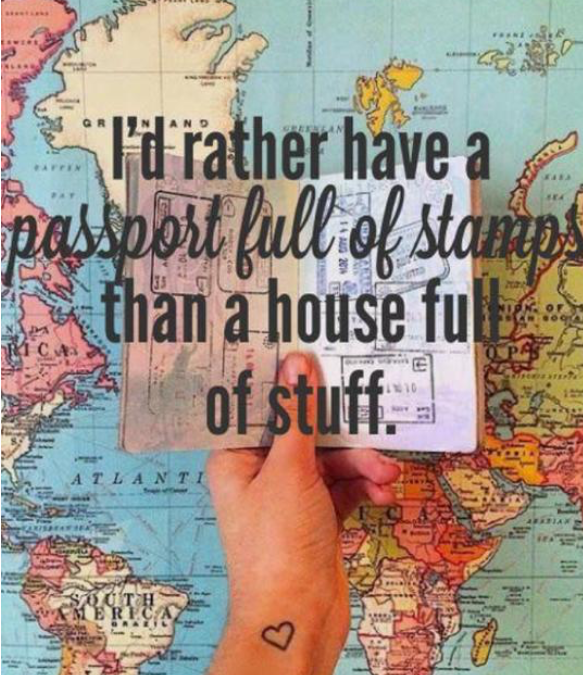How I Did It – Purge, That Is…
Living in Florida, a friend of ours prattled on about their collections one evening while we drank wine in their backyard. Our daughters were young, and they, too, had begun to collect stuffed pandas and white tigers. And Rick had begun collecting corkscrews with his dad. So we enjoyed a lively exchange of the love of hunting for our selected items. Where we discovered them. The adrenaline rush when we spotted that elusive object.
Over the years, we have had this discussion with numerous friends and acquaintances. And the conversation turns to location. Where does one store or keep their collections? Beanie Babies? Corkscrews? Blue bottles? One friend carefully keeps her Aunt Anna’s special lemoncello glasses in an antique curio cabinet. Another admires her grandmother’s silver spoons in a special box case. Everyone desires to be surrounded by their “stuff”. When we recount our process of purging our home, people throw up their hands in horror. Why could you release special artifacts? How dare one get rid of anything?
Well.
- Your children told you that they did not want “it”. They have their own “stuff”.
- You plan to downsize and it becomes a necessity to let go of items.
- You finally tired of the tens of thousands of dollars you were spending on storing those items in a rental storage shed.
So, how does one move from storing, keeping, clinging to “stuff” and get to a place of release?
- Realize you don’t need to purge deeply. Start with a little. Open a closet. Possessions are in a box. Why? Have you opened that box lately? Do you need those old travel coffee cups without lids? Maybe not, but you want your grandfather’s army knife. Pick your battles. Not everything is necessary to keep just because it’s still “good”. Make some determinations and toss.
- Ask yourself why that box of photos is important. Do you know the people in that 1945 Studer’s snapshot? Maybe you choose a few photos to hang in a frame to preserve and embrace your family’s past history. That would be a wonderful way to showcase your relatives. You just may not need all 400 of those pictures that are so blurred you can’t recognize the image.
- Do you just feel nostalgic? That table in your storage shed reminds you of baking bread with your grandmother as a child. But maybe you have the rolling pin she used for pie making and that smaller item could be the keepsake for those lovely memories instead of a table that doesn’t fit in your home.
- What artifacts should be saved for future generations? Your children don’t want your stuff because they have their own stuff. But keep that child’s table and chairs for your grandchildren. Just be realistic. Old, torn, or broken items will not be respected by the next generation. I kept a beautiful dress that my daughters wore, but it had a stain on the front that I never could erase. Will they put a ruined outfit on their own children some day? With that thought, I was able to release this precious piece.
- You spent money on those articles in that shed. This is heard often and is one of the hardest roadblocks to move past. Of course you spent money to purchase a large framed piece for your living room. And you hung it above your sofa. If you replaced it five years later for another wall piece, do you need to keep that old framed one? No. It served its purpose so the worth of the frame has already been paid off. Release it so someone else might enjoy it. You may even feel better if you sell it. Just remember that it’s okay to divest yourself of objects you purchased.
- Time is another motivator. When Rick’s mom passed away, he really wanted their lovely maple headboard. Even though it was for a double mattress. And we had never owned a double mattress. But he had emotional feelings and we stored the headboard in our basement. Ten years later that headboard was still in our closet. But time had erased the emotions of holding onto that maple frame. He had warm feelings for his mom without needing to keep that wooden object. So he was ready to release it. You realize that something can be a keepsake today, but it may not be a treasured item tomorrow. What is special one day may be less important years later.
Rick and I had two distinct categories as we sorted through forty years of home ownership collectibles. The first were the true keepsakes. The photo albums of our travels. The baby books of our children. Those special mementos that make us smile. What we deemed to be irreplaceable today because they could not be purchased. This was the emotional category.
The second was labeled for our next home. We may not travel forever and we will want a place to grow old together. So we think that we will hang that canvas frame of Tuscany, celebrate with those Christmas dishes, eat from our kitchen plates, and entertain with those wine glasses. And we can divest ourselves of articles someday if these boxes do not land in a house. This was the realistic category.
Remember that an item will never be a stand in for a sweet memory of a loved one, of the past. That was our biggest takeaway. People are important. The trappings are inanimate objects. Just objects.
So, take a deep breath and open a box. Ahhhh. There’s the sugar bowl that Grandma used when I spent the night at her house when I was young.
Now, that’s important!
Cest importante!


Recent Comments